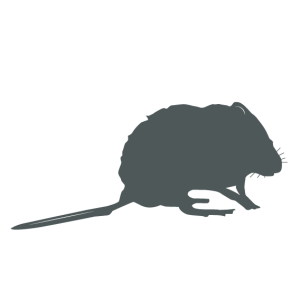

1 - 2 years
Length: 5 - 8cm; Tail: 2 - 4cm; Weight: 5 - 14g
Native and widespread. Listed as Least Concern on the global IUCN Red List of Threatened Species. Protected in the UK under the Wildlife and Countryside Act, 1981.
The Eurasian common shrew is found throughout mainland Britain and has been introduced to many of our offshore islands with the exception of Ireland, Shetland and the Outer Hebrides. Individuals have a preference for deciduous woodland, grassland, hedgerows and scrubland habitats where they forage throughout the day on insects, earthworms and snails. It is estimated that around 50 individuals may occupy any hectare of woodland and up to 20 individuals within grassland habitats.
This species of shrew has a pointy face with a long nose and very small eyes and ears. It looks dark brown from above with a grey or silver abdomen, and has chestnut-coloured sides. Adults may only live for a year, in which time they give birth to three or four litters of around six young.
Droppings can be analysed all-year-round. Less active during winter months.
